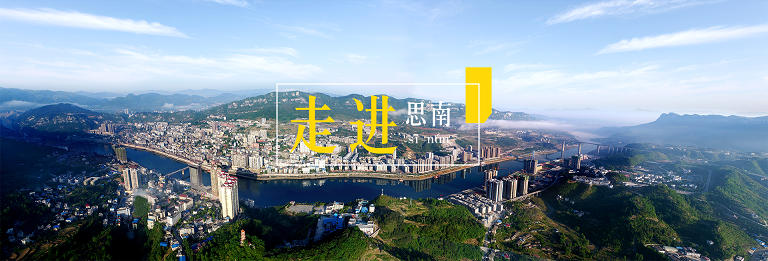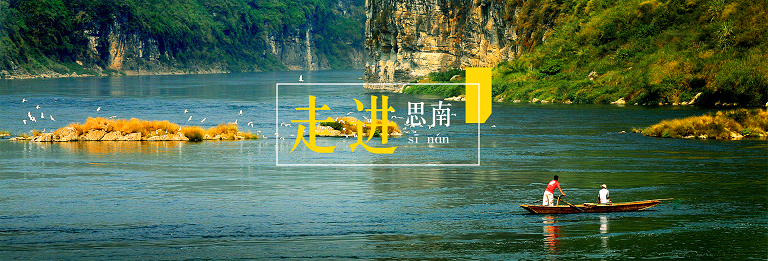Institutional information
| District: | Guizhou > Tongren |
| Category: | Administrative Regio > Province |
| Tel: | 00-86-0856-7231070 |
| Website: | Click to visit the Chinese website |
| Address: | County Government Building, Fuhou Street, Sitang Town, Sinnan County, Guizhou Province |
| Working Hours: | National statutory working days; Morning: 8:30–12:00; Afternoon: 2:30–6:00 |
| Video: | https://www.sinan.gov.cn/masvod/public/2023/11/15/20231115_18bd0a118ed_r1_3200k.mp4 |
| Description: | The tranquil waters of the Si Nan River and the mighty Wu Jiang River flow through this land, connecting the regions of Ba Shu and Xiao Xiang. Spanning an area of 2,230.5 square kilometers, |
| data statistics: | 168 browse,0commentaries,0message,1Pictures,0focus |
Seller Map
Detailed Introduction
The tranquil waters of the Si Nan River and the mighty Wu Jiang River flow through this land, connecting the regions of Ba Shu and Xiao Xiang. Spanning an area of 2,230.5 square kilometers, this magical and beautiful region is home to 17 towns, 3 sub-districts, 8 ethnic townships, 487 administrative villages, and 42 communities. It is the birthplace of approximately 700,000 people from various ethnic groups, including the Han, Tujia, Miao, Gelao, and Mongolian peoples. It is known as the “Hometown of Folk Art in China,” " China's Camphor Wood Hometown,“ ”National Lantern Hometown,“ ”National Top 100 Tea Industry County,“ and ”National Export Food Agricultural Industry (Tea) Quality and Safety Demonstration Zone."

For thousands of years, boats have come and gone along the Wujiang River, their sails dotting the horizon, as the echoes of time narrate the timelessness of history. Established as Yongning County during the Han Dynasty, it was later renamed Xuanwei Prefecture during the Yuan Dynasty and became Sinnan Prefecture during the Ming and Qing Dynasties, with a history spanning over 2,000 years. Benefiting from the Wujiang River's navigability, it has been a hub for commerce and trade since ancient times, making it one of the earliest developed counties in Guizhou Province and a regional economic and cultural center in the middle and lower reaches of the Wujiang River. It is renowned as the “First County of Guizhou · Pearl of the Wujiang River.”
Over six centuries, it has produced a wealth of literary works, and its vast landscape stretches for thousands of miles. Amidst the green mountains and clear waters, diverse cultures coexist harmoniously. Confucian culture, Ba-Shu culture, and Jingchu culture blend seamlessly, giving rise to a unique regional ethnic culture. The melodious Tujia lantern dances reflect the rich humanistic charm of the Wujiang River basin and have been listed by the Ministry of Culture as one of the first batches of intangible cultural heritage protection directories. The people are simple and kind-hearted, like the vast plains; talents abound, like the brilliant stars in the sky. In ancient times, there was Tian Qiu, who boldly petitioned the emperor and pioneered the imperial examination system in Guizhou; and Li Wei, who promoted Neo-Confucianism and influenced the literary style of northern Guizhou. In modern times, there was General Kuang Jixun, a senior Red Army commander who led the Pengxi Uprising to save the nation and strengthen the country. Currently, there is General Liao Xilong, a former member of the Central Military Commission and Minister of the General Logistics Department, who has distinguished himself in the southern frontier and struck fear into the hearts of enemies. The century-old Sinnan High School is a provincial first-class示范性 high school; Sinnan No. 8 High School is the only provincial second-class示范性 high school located in a township; and Sinnan Vocational School is among the national示范性 secondary vocational schools and provincial key secondary vocational schools. It has been honored with titles such as “National Model County for Art Education” and “One of the Top Ten Regional Curriculum Reform Model Counties in China.”

The vibrant and colorful Wujiang River Scenic Area is a gift from nature. Here, one can find the majestic grandeur of mountains, the delicate beauty of springs, the gentle and affectionate nature of water, and the abundant mineral resources buried deep within the earth. The Sinan Stone Forest, a masterpiece of nature, is the best-developed, ecologically preserved, and most intact karst stone forest of its kind discovered to date at the same latitude on Earth. Covering an area of nearly 5 square kilometers, it has been designated as a national geological park and is one of the first batch of national geological science popularization bases. Geothermal resources, a gift from nature, with 11 springs producing a daily output of 12,000 tons of water. It has been named a “National Geothermal Development and Utilization Demonstration Zone” by the China Mining Association, and Jiutian Hot Spring has been designated as one of the first four “Silver Spring-level” hot spring resorts in the province. The region has a well-developed water system and abundant electricity. Excluding the main stem of the Wujiang River, the theoretical hydropower potential is 191,800 kilowatts, with 58,500 kilowatts available for development. The Silin Hydropower Station, with an installed capacity of 105,000 kilowatts, has been completed and is generating electricity. The county is rich in coal, iron, pyrite, orpiment, barite, marble, quartz sand, limestone, and other resources. Preliminary surveys have identified marble reserves of 200 million cubic meters, with potential reserves of 1 billion cubic meters, and a potential economic value exceeding 8 trillion yuan. The county's decorative stone industry has been included in the provincial plan for decorative stone industry clusters and has the potential to become the largest stone development and processing base in Guizhou Province and even the southwest region. “Sinan Yellow Cattle” has been awarded the National Agricultural Product Geographical Indication Certification, “Sinan Yan Tea” has been registered as a National Geographical Indication Certification Trademark, and Jiali Jia has been listed as one of the first 16 high-growth agricultural product (food) processing enterprises in the province. The “Agricultural County” brand is accelerating the empowerment of rural revitalization.

Like a dragon soaring through the clouds, the county is transforming its natural barriers into smooth pathways. The Tongzun Highway runs east-west across the county, while the Hangrui, Yanrong, Yuxin, and Deyu expressways intersect in a grid pattern. The Wujiang River, a golden waterway, runs north-south through the county, and the Sinnan Port has commenced operations, achieving “access to the river and sea,” becoming the first “port park” project to be put into operation in the province after the Wujiang River's resumption of navigation. The Qianbei Airport, located 16 kilometers from the county seat, is under accelerated construction; efforts are underway to secure the passage of the Tongzun Railway and the Fuli Railway through Sinnan. A comprehensive transportation network of highways, railways, waterways, and air transport is taking shape, set to reduce the temporal and spatial distances to major cities across the country.
As the seasons change, the nation ushers in a new era of prosperity; riding the waves and singing songs, the ancient county embarks on a new chapter. Embarking on the new journey of modernization, Sinnan County is deeply implementing the spirit of the 20th National Congress of the Communist Party of China and the important speeches made by President Xi Jinping during his inspection of Guizhou Province, and earnestly implementing the deployment requirements of the 13th Provincial Party Congress and the 3rd Municipal Party Congress, adhering to high-quality development as the overarching principle, firmly upholding the bottom lines of development and ecology, better balancing development and security, and fully seizing the major opportunities presented by the State Council's Document No. 2 of 2022. The county is focusing on the provincial party committee's implementation of the main strategy and achievement of the main positioning, and around the municipal party committee's “seven ecologies” and
